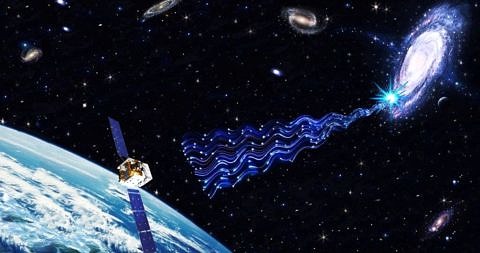Supernovas shed light onto dark matter
Explosions from stars, so-called supernovas, can shed some light onto the research into dark matter. This has been shown by a study carried out by a team of German and Slovenian researchers at Friedrich-Alexander-Universität Erlangen-Nürnberg and the University of Nova Gorica. The researchers’ findings have been published in the journal ‘Physical Review Letters’.
Dark matter is the puzzling material that neither emits nor absorbs light and from which 85 percent of the matter in the universe is comprised. Researchers worldwide are investigating what is behind it using experiments on the ground and in space. Most theories presume that dark matter is made up of as yet undiscovered elemental particles. A new study by Dr. Manuel Meyer at the Erlangen Centre for Astroparticle Physics (ECAP) at FAU and Dr. Tanja Petrushevska from the Center for Astrophysics and Cosmology at the University of Nova Gorica now shows that researchers can also use supernovas to search for a certain class of particles of dark matter.
For the first time, both researchers correlated the data from the Fermi Large Area Telescope (LAT) on board a NASA satellite with data from conventional optical telescopes to research supernovas beyond our Milky Way, which enables them to make predictions about the time frame of explosions of stars. Pointing LAT at the right section of the sky at the time when an explosion is due to occur will shed some light on the research into dark matter and provide new answers to questions in fundamental physics.
Further information:
Dr. Manuel Meyer
Erlangen Centre for Astroparticle Physics (ECAP)
Phone: +49 9131 85-25382
manuel.e.meyer@fau.de
